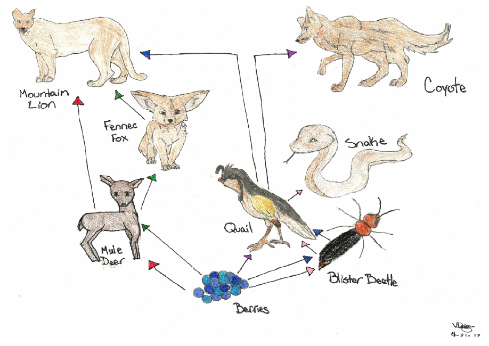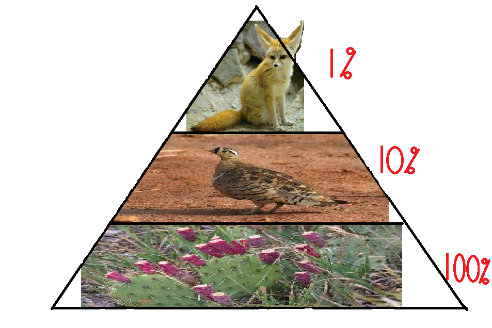 Food Webs A food web consists of many intertwined food chains. This web demonstrates multiple predator-prey relationships. The food chains that are represented are as follows:
Decomposers are also an essential part of food webs, they break down all matter into simpler substances. They are typically forms of fungi and bacteria, but in a desert it is difficult for these types of decomposers to survive in the desert biome. So instead, the more common decomposers in this region consist of beetles, earthworms, and millipedes. |
 Food Chains In this example of a desert food chain, the members of this food chain are the cactus fruit (producer), the jack rabbit (herbivore), and a kit fox (carnivore). In this drawing, the energy flows from right to left. The rabbit eats the fruit of the cactus and the fox eats the rabbit. in a food chain, it represents a series of organisms interrelated in their feeding habits, the smallest being fed upon by a larger one, which in turn feeds a still larger one. In food chains, the first organism listed is the primary producer. The second organism is the primary consumer, the third is the secondary consumer, and the fourth organism is the tertiary consumer. In a food chain, energy is transferred and lost as it advances from organism to organism. With producers 100% of the energy is present, but when it is transferred to the primary consumer, 90% of the energy is lost. Where does this energy go? Some of the energy is used by the producer, and a majority of the energy is lost though waste and heat. Abiotic Factors present in this food chain and how it effects the organisms:
|
|||||||
|
||||||||
